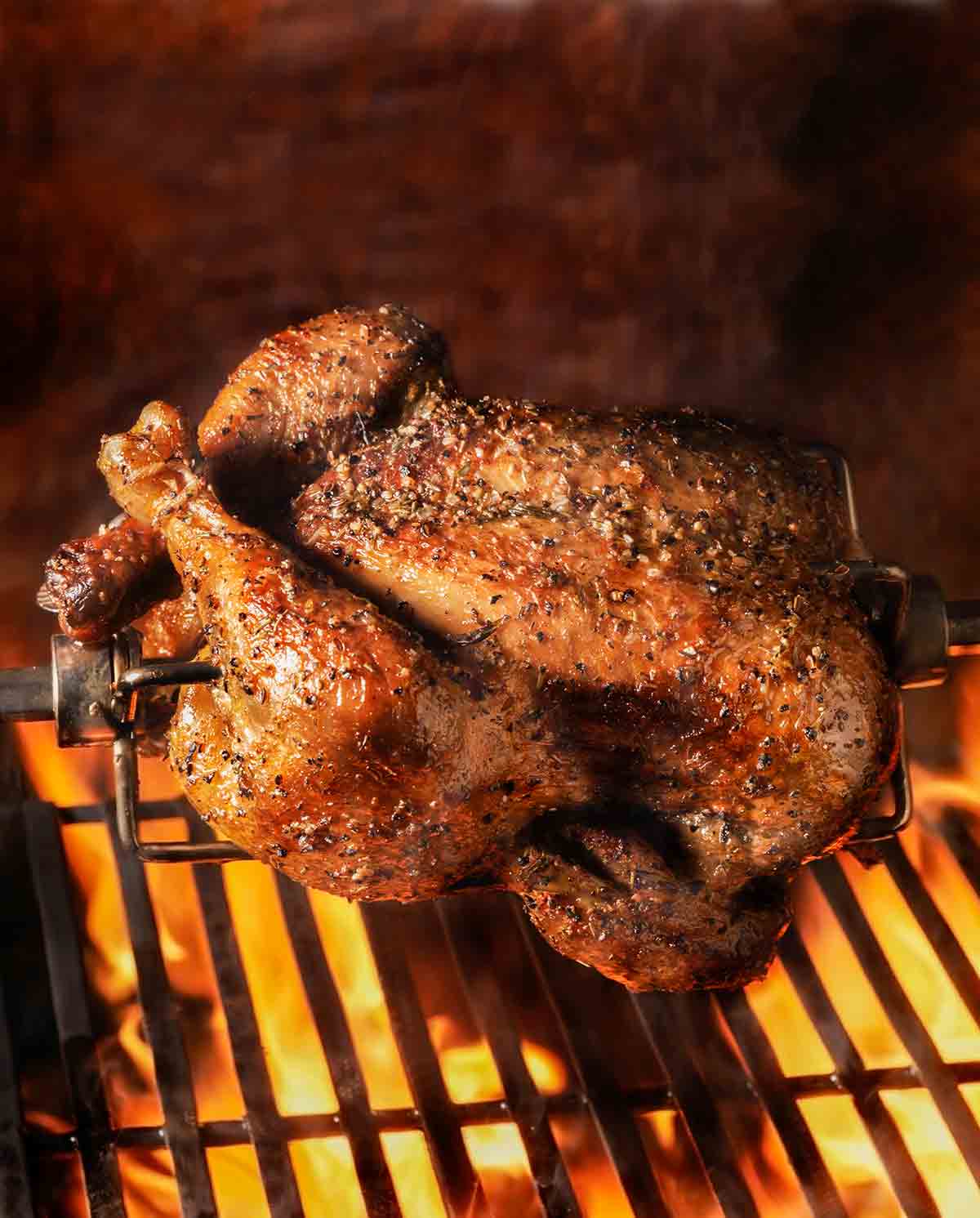
After tucking into RoChix from other places for comparison, one major difference surfaced: Citarella brines their birds. So that’s what we wrassled with first. We tried all kinds of combinations of herbs and spices, as well as varying amounts of salt, until we finally hit upon what comes closest to (and some of our NYC guests swear is even better than) Citarella’s: lots and lots of thyme, a handful of garlic cloves, a bit of rosemary, a pittance of whole black peppercorns, salt, and sugar. (Curiously, Jamie commented that adding sugar is unusual for chicken brining, but we found that it helps give the bird an incredibly crisp golden-brown skin.)
After we seared the brine recipe into our brains, we began knocking these roasted suckers out of the oven left and right. But we realized a lot of chicken-y goodness was being left in the pan. (We took a page from Ina Garten’s book—literally—and tossed homemade croutons with the pan drippings to great effect and copious rounds of applause.) But that still didn’t solve our dilemma: The more fat and juices that dripped off the chicken into the pan, the less juicy and flavorful the bird. Plain old physics, right?
To fix that, we bought a vertical rotisserie. (What can I say? Counter space was at a premium.) It proved to be a bust. All those incredibly chickalicious juices just sluiced off the bird, leaving the top utterly dry and stringy. That’s why when I bought the Weber Summit S-670, I made sure it was kitted out with a rotisserie.

On the appointed day, with rotisserie saber in hand and forks at the ready, Jamie showed me how to truss the chicken, slide it onto the saber, secure it with the forks, and let it rip. Because it’s a horizontal rotisserie, all parts of the bird are basted in a continual bath of goodness from stem to stern as it rotates.
After about two hours in the Weber “sauna of flavor,” theRoChix was evenly cooked, bursting with juices, and had crisp, beautifully browned skin. And this was no one-off. Since Jamie’s visit, The One and I have made RoChix again and again and again—to even greater applause. (Flowers have yet to be thrown at my feet, though.) While the bird is resting on the cutting board, all that’s needed is to pop an excellent bottle of wine, grill some veg-edibles, drag the table into the middle of the backyard, and dinner is served.
P.S. All right, I’ll admit it, I’m showing off a bit here. (But you would, too, if you had a rotisserie worthy of the gods.) I can assure you don’t need one to make fabulous grilled chicken. Try Bacon-Wrapped Chicken Wings or Grilled Roasted Chicken. But do yourself a favor and brine your chicken first. It makes a whopping difference.

















Another wonderful production! Where is your brine for chicken recipe? I have been searching and experimenting forever to discover the perfect brining ingredients and times for chicken, and so far not very successfully. Pray tell!
I kind of thought I gave the recipe in the post! You’re going to have to nudge The One, because it was he who really finessed the brine.
To me brining is the essential thing to do, but lately I have been using a recipe from MS Living(!) that is a great thing with chicken, whole or parts—buttermilk with salt, garlic and LOTS of chopped thyme. Brine the bird for about 8 hours, wipe dry and rotisserie or grill. As a fan of crispy, lucious skin, you don’t get it but the trade-off is worth it for the quality of the meat (assuming a decent chicken to begin—not one of those poor, tormented confined creatures.
Paseo, it’s interesting to know the recipe calls for buttermilk. I’ve used it many times for fried chicken, but never for brining. what is it all for the meat itself?
David, for the love of all that’s holy, could we pleeeeeeeease have the brine recipe???